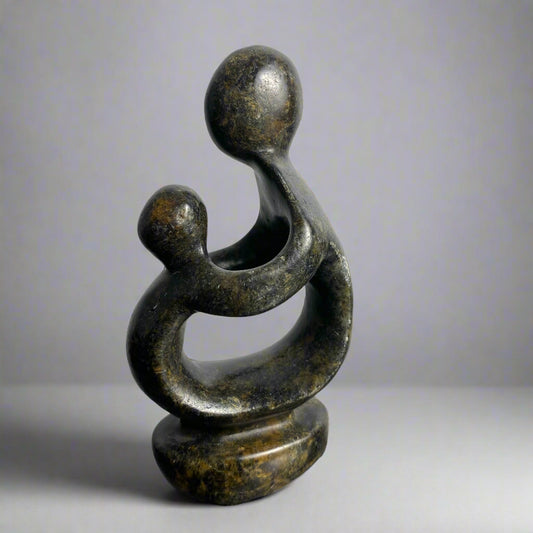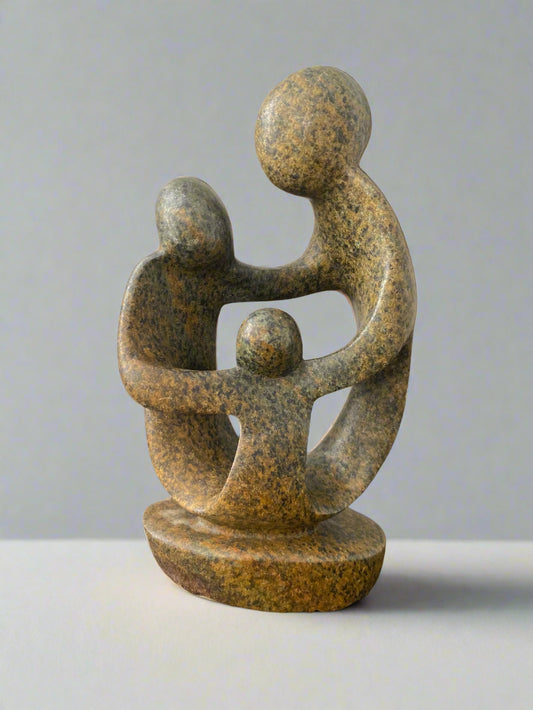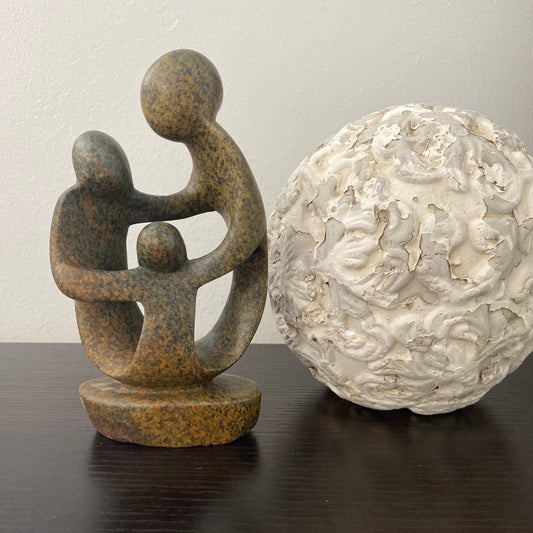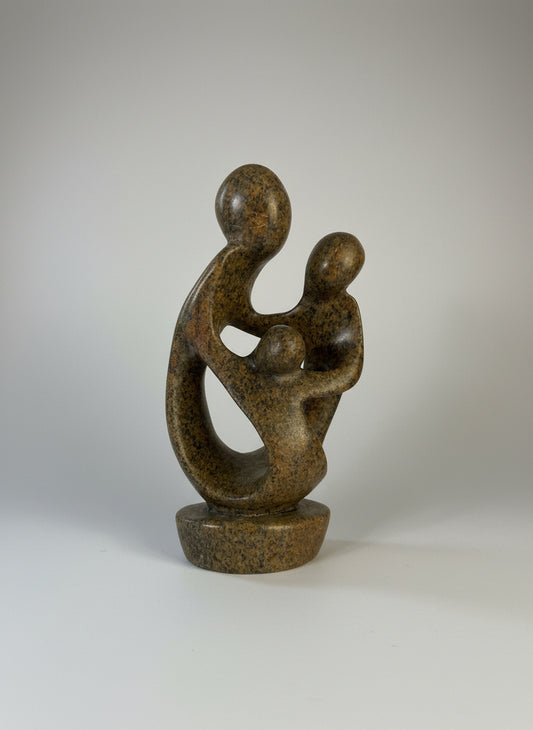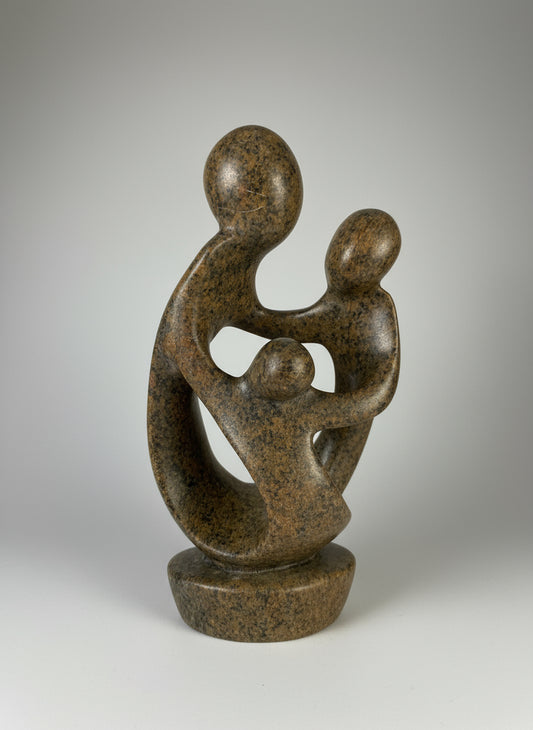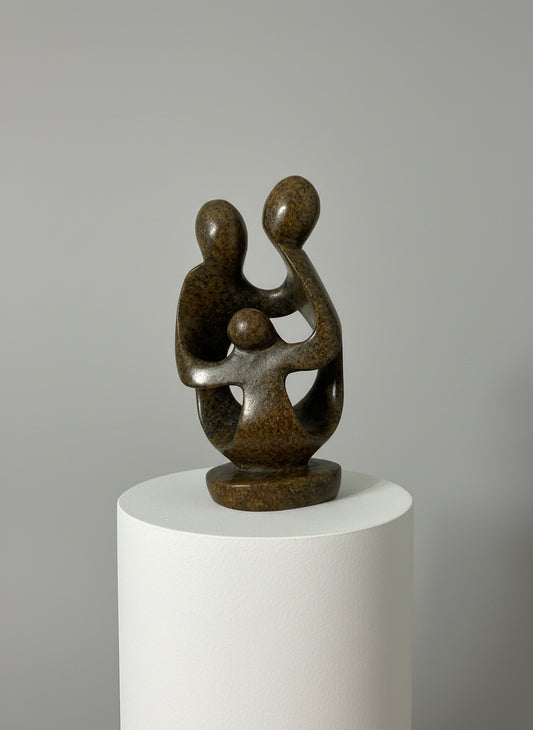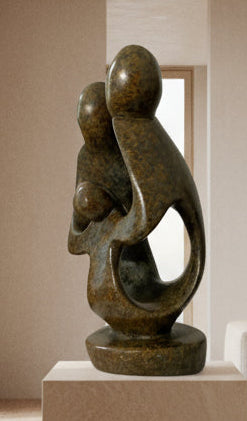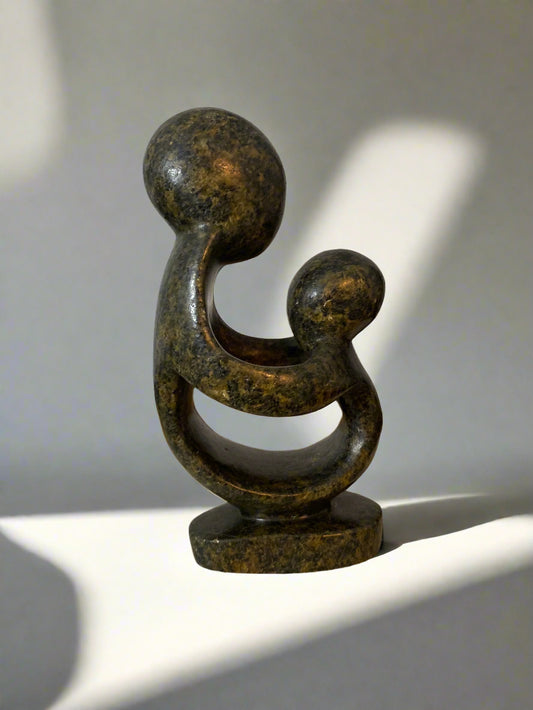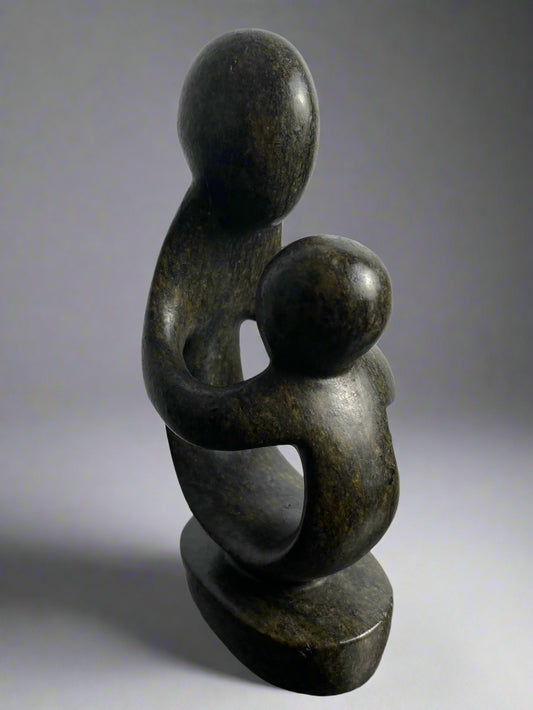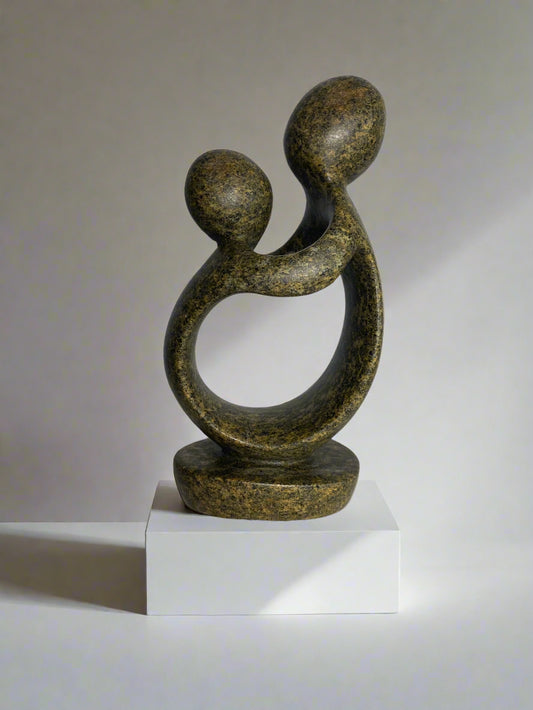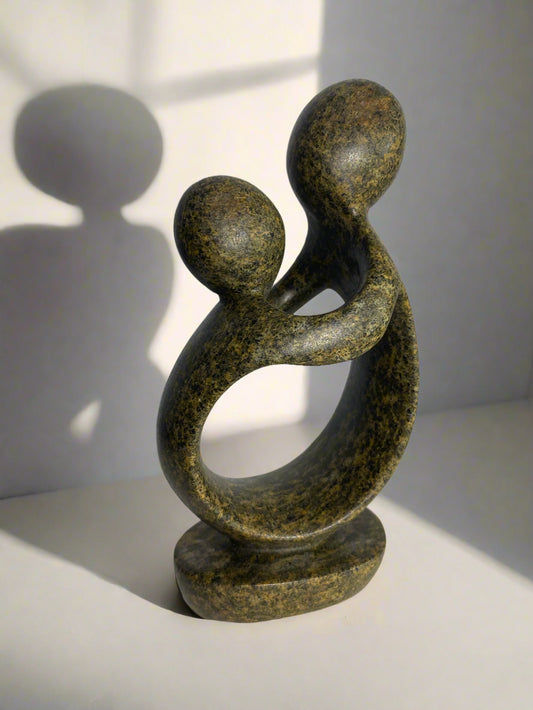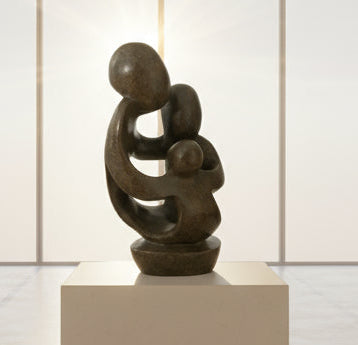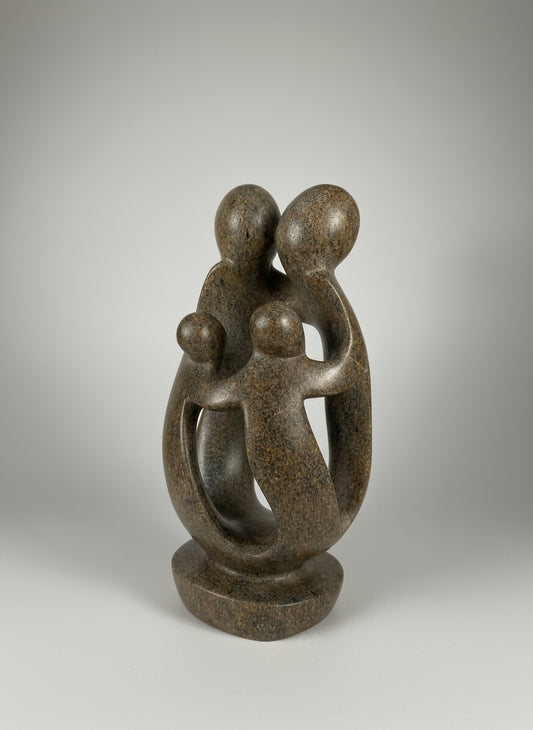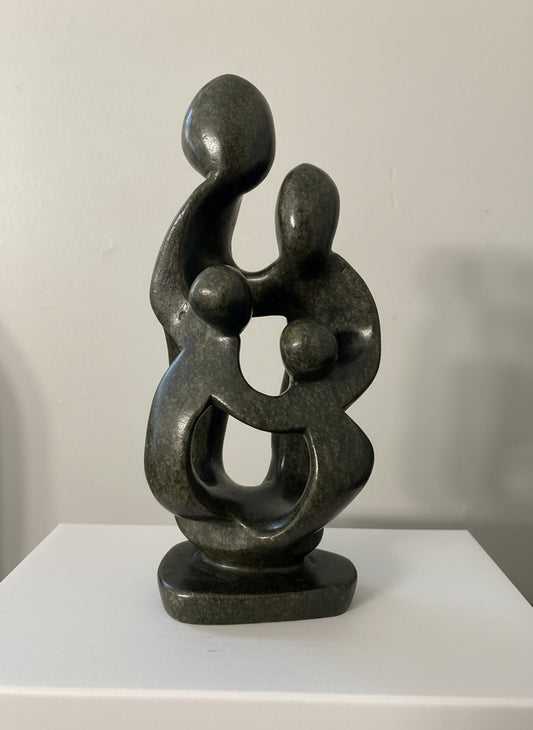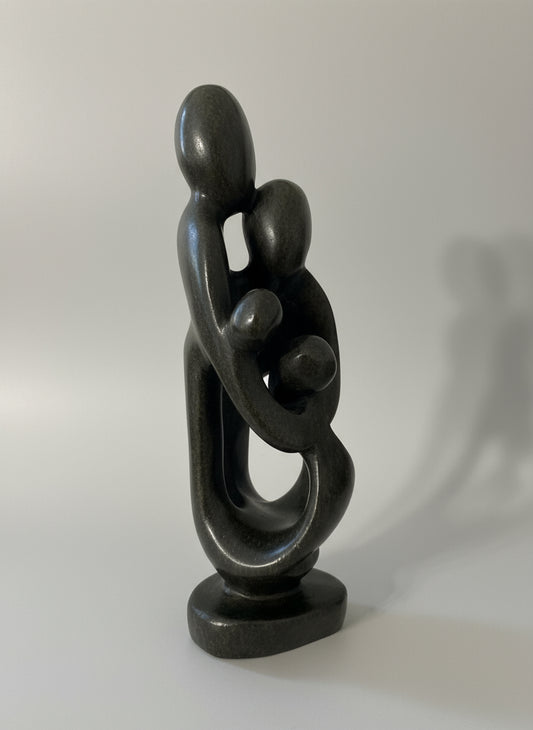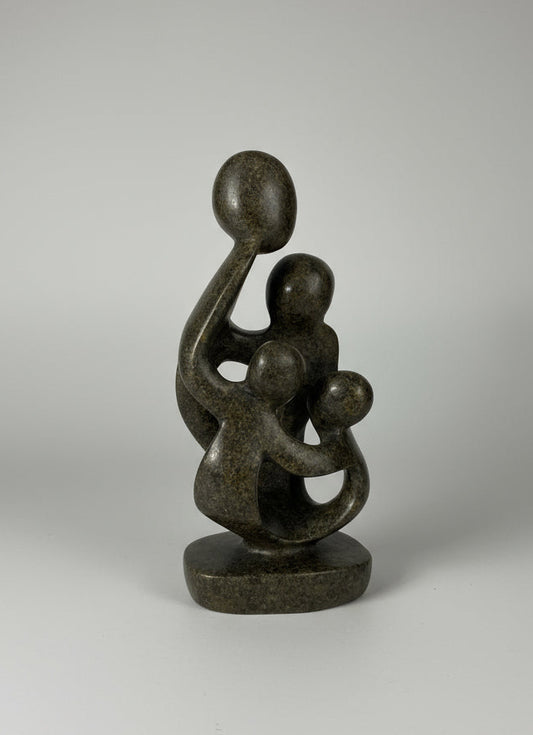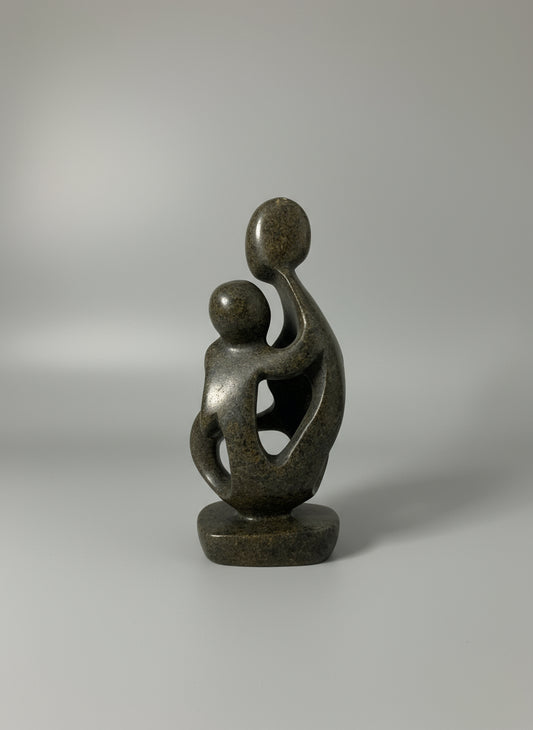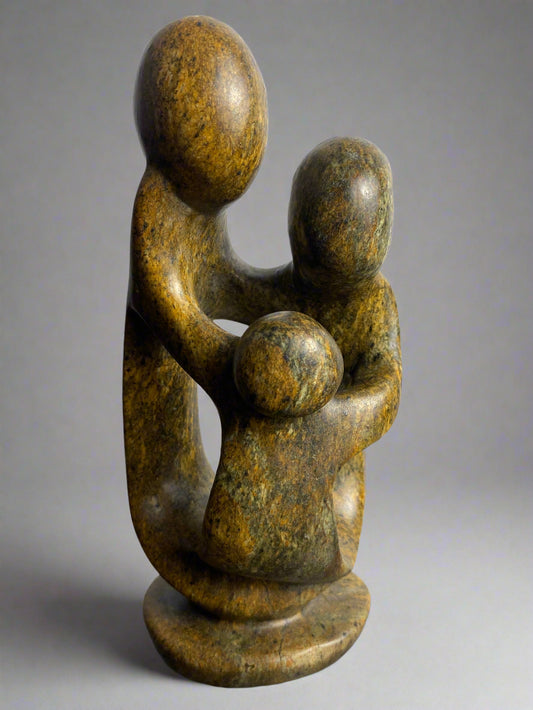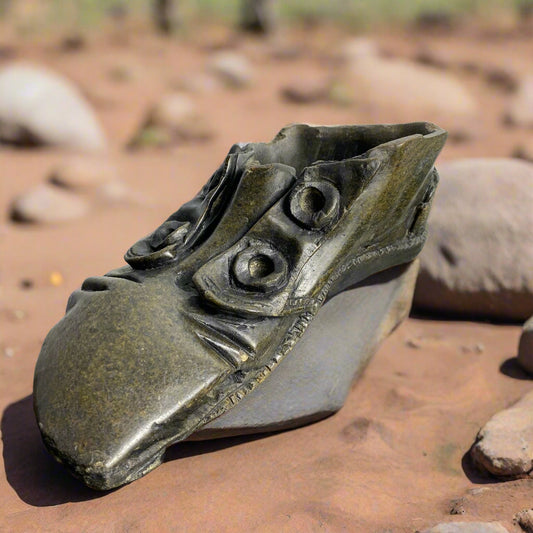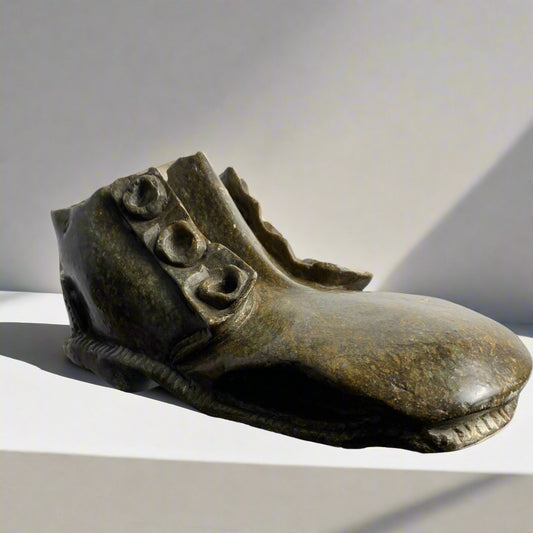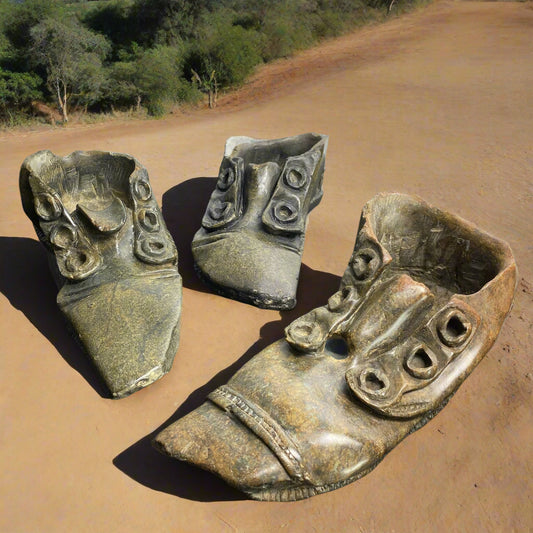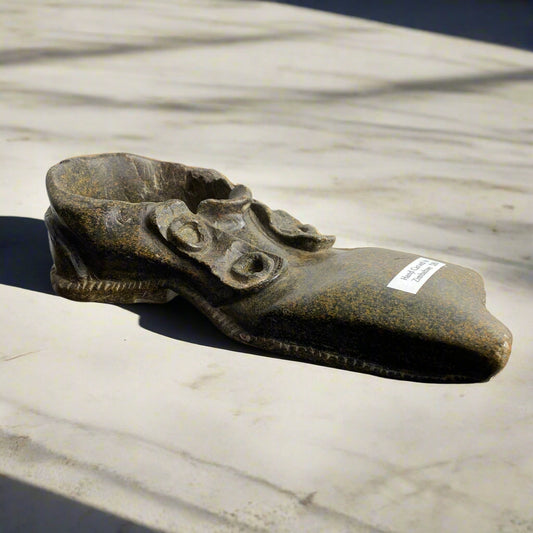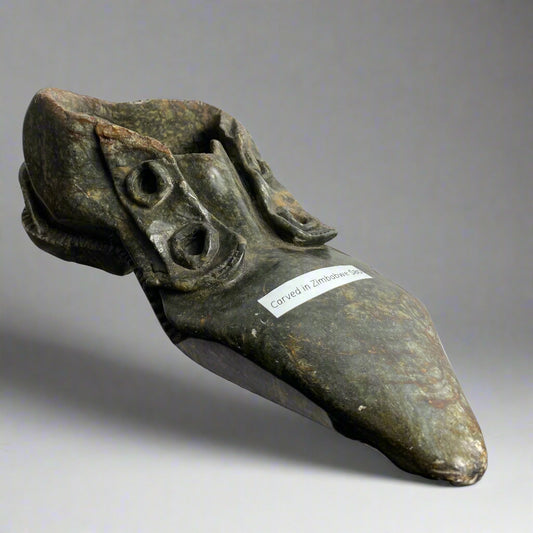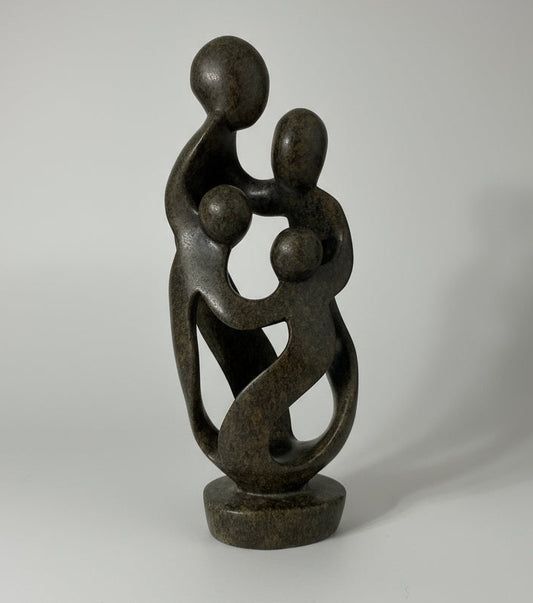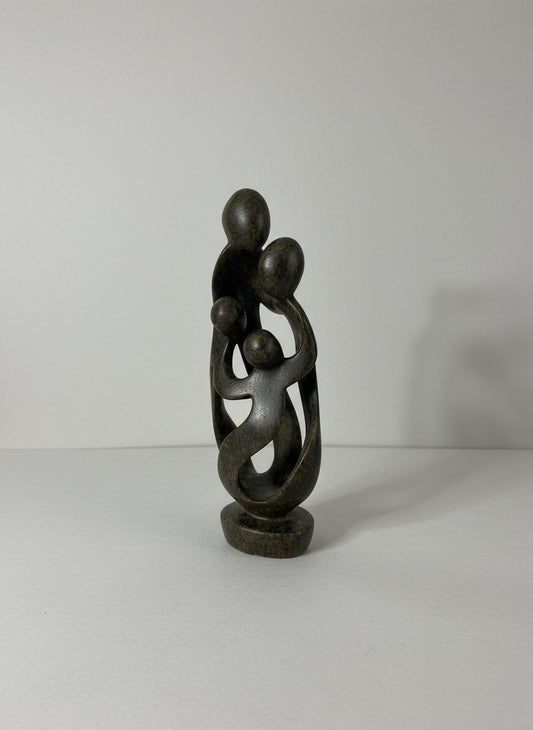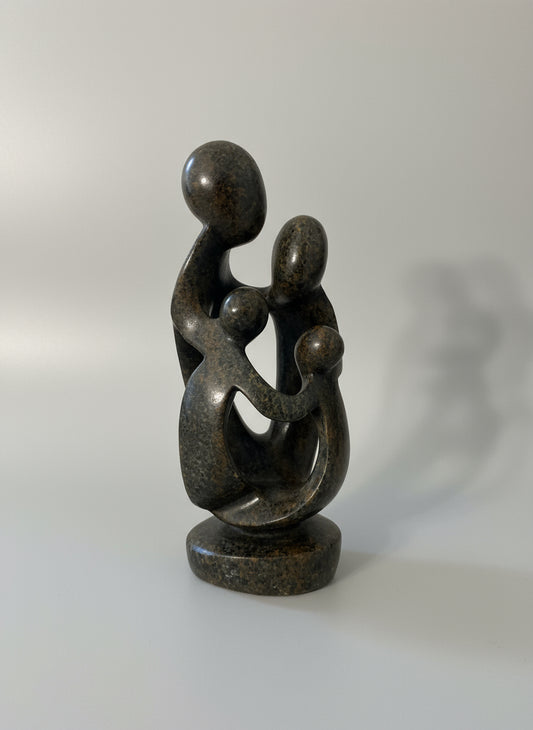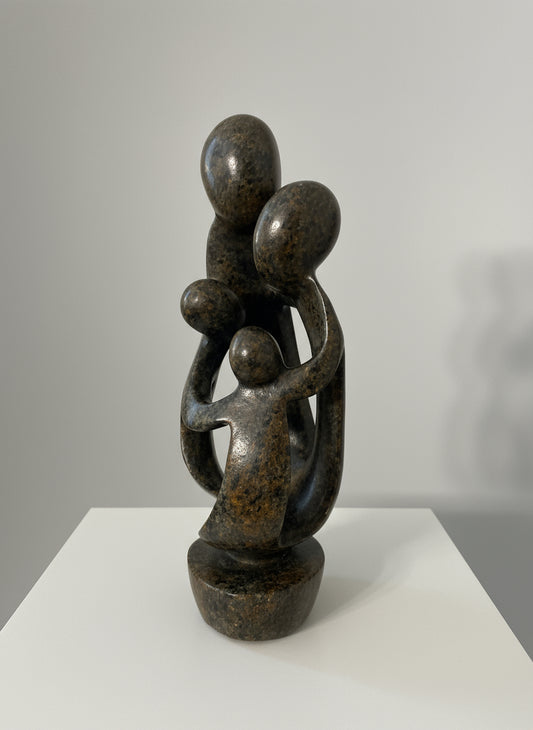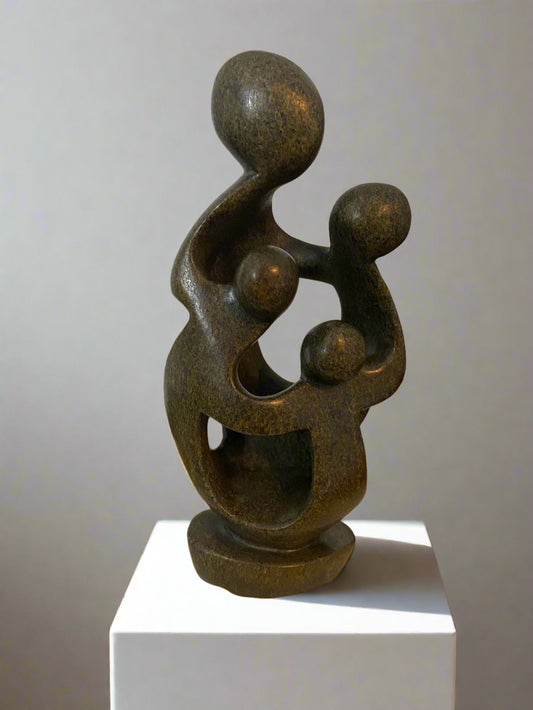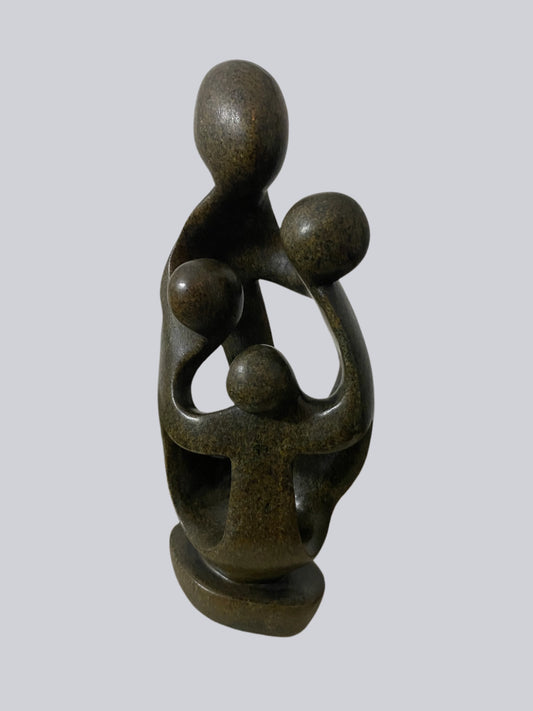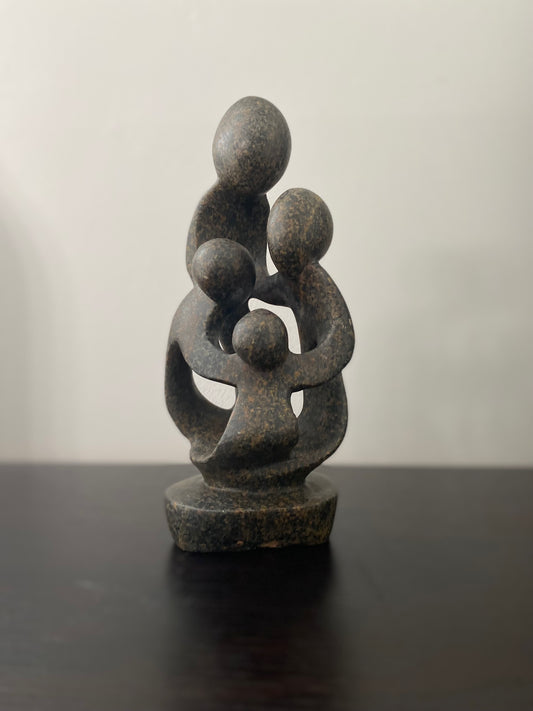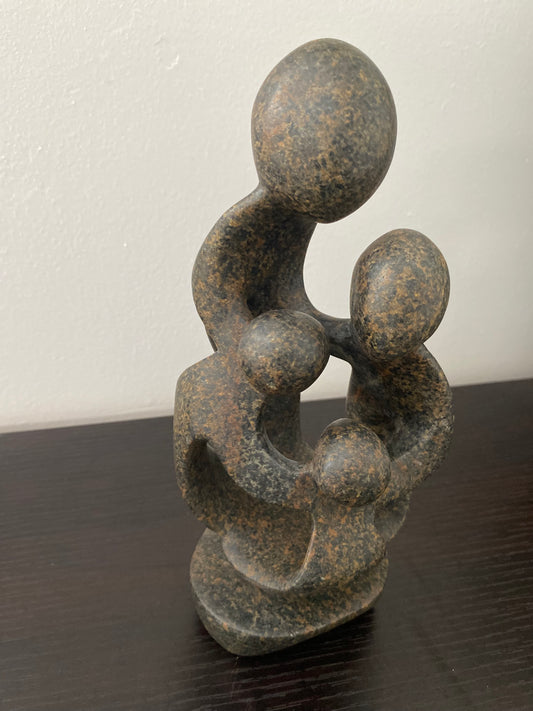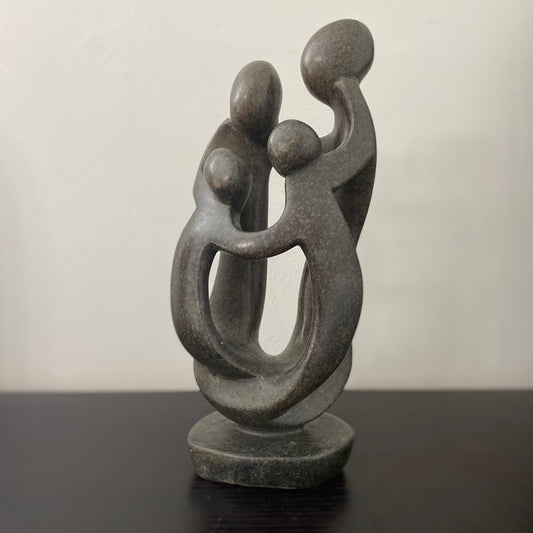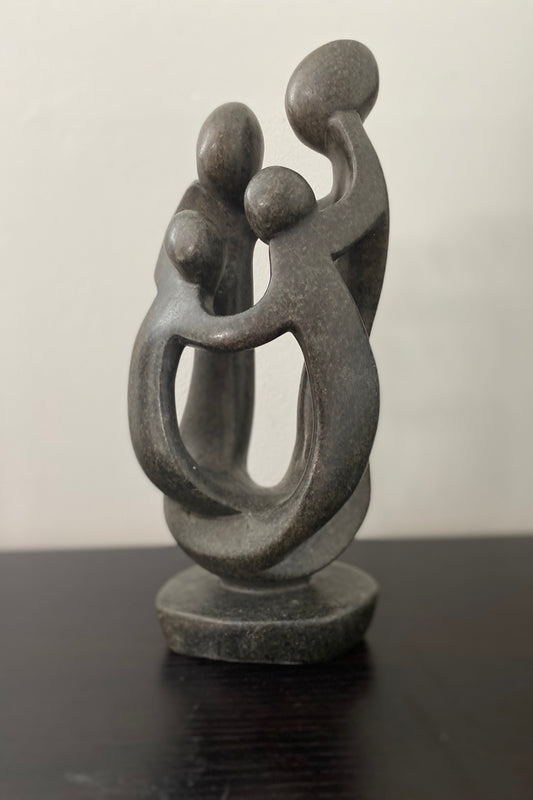Collection: Zimbabwe Sculptures
Shona sculptures from Zimbabwe are more than just art—they are powerful, meaningful pieces that connect you to a rich cultural heritage. Masterfully carved from stunning stones like soapstone and serpentine, each sculpture tells a unique story, blending tradition with modern expression. These sculptures capture the essence of African spirituality, with designs inspired by ancestral figures, animals, and nature. Owning a Shona sculpture means having a one-of-a-kind piece that not only enhances your space but also holds deep cultural and spiritual significance. Bring a timeless piece of Zimbabwean artistry into your life today, and let its beauty and meaning inspire you.

Please visit our store to view our full Gallery of Shona Sculptures.
*All sculptures are solid stone. The sculptures are heavy items. Shipping of sculptures will be the buyers responsibility, We will pack the item based on shippers instructions. Please contact Hamiltons of Pelham directly to inquire about purchasing sculptures.
-
Ukama - 2c
Regular price $40.00 CADRegular price -
Ukama - 3e
Regular price $50.00 CADRegular price -
Ukama - 3b
Regular price $55.00 CADRegular price -
Ukama - 3f
Regular price $55.00 CADRegular price -
Ukama - 2a
Regular price $60.00 CADRegular price -
Ukama - 2b
Regular price $60.00 CADRegular price -
Ukama - 2d
Regular price $60.00 CADRegular price -
Ukama - 4b
Regular price $65.00 CADRegular price -
Ukama - 3c
Regular price $65.00 CADRegular price -
Ukama - 4g
Regular price $65.00 CADRegular price -
Ukama - 4k
Regular price $65.00 CADRegular price -
Ukama - 4h
Regular price $70.00 CADRegular price -
Ukama - 4j
Regular price $70.00 CADRegular price -
Ukama - 3d
Regular price $75.00 CADRegular price -
Zimbabwe Shona Stone Sculpture – Stone Art Shoes 103
Regular price $80.00 CADRegular price -
Zimbabwe Shona Stone Sculpture – Stone Art Shoes 106
Regular price $80.00 CADRegular price -
Zimbabwe Shona Stone Sculpture – Stone Art Shoes 107
Regular price $80.00 CADRegular price -
Zimbabwe Shona Stone Sculpture – Stone Art Shoes 108
Regular price $80.00 CADRegular price -
Zimbabwe Shona Stone Sculpture – Stone Art Shoes 109
Regular price $80.00 CADRegular price -
Ukama - 4d
Regular price $80.00 CADRegular price -
Ukama - 4i
Regular price $80.00 CADRegular price -
Ukama - 4a
Regular price $85.00 CADRegular price -
Ukama - 4f
Regular price $85.00 CADRegular price -
Ukama - 4e
Regular price $90.00 CADRegular price

